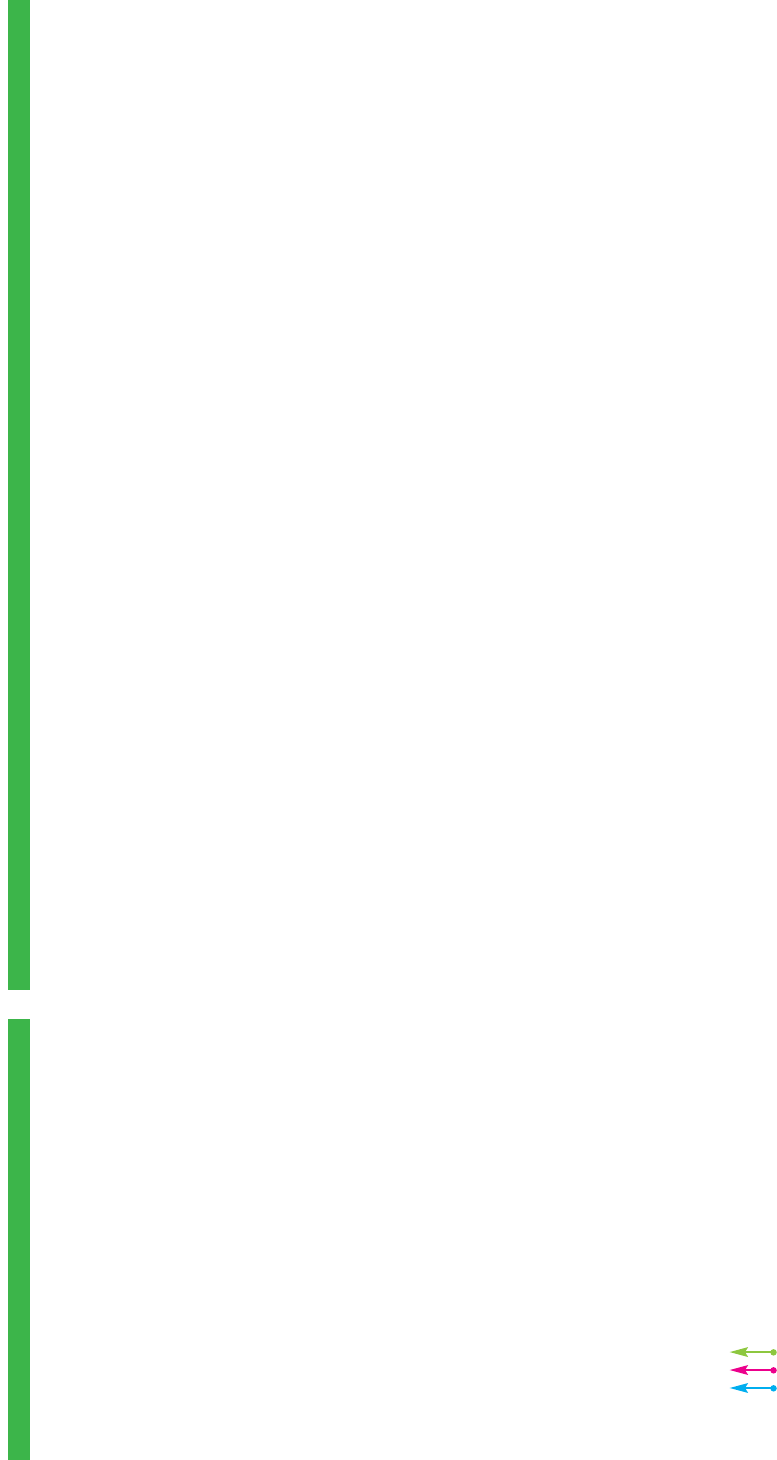
35
ANATOMY OF DESIGN
Minimalism and maximalism are two sides of modernism. While orthodox
modernists of the 1920s and 1950s (the Bauhaus and the Swiss, respectively)
preferred economy and thus rejected complexity because it limited accessibility,
which impeded functionality, minimal and maximal can nevertheless serve the
same utilitarian ends. Moreover, they can be equally balanced in the same work
at the same time, as The Chase shows in its unique design for The Manchester
Dog Home Annual Report, an atypical venue for the application of contemporary
modernism or any other ism.
The Manchester Dog Home is an underfunded charity in the United
Kingdom that in 2002 was desperately seeking a fresh influx of cash to
support the care of the 6,796 strays handled by the facility in the previous
year. The design brief to The Chase was to somehow appeal to potential
donors efficiently, emotionally, and compellingly, and on the barest of budgets.
Through short lines of text and clever visual aids the story of the home,
combined with facts and figures of their accomplishments, fill the pages. But
not all the pages are filled.
Sure, the cover graphically illustrates how many dogs were rescued last
year—each image a portrait of an actual orphan filling the entire image area.
And the following spread is a type-packed listing of the name of each dog that
had passed through the home. But the next spread is as paper-white as can be,
with only a small visual and text block in the lower right corner. Coming off
such a complex presentation of picture and text, the designers decided to give
the reader some relief while at the same time making a statement—“every dog
counts”—that would resonate. The entire publication was produced cheaply as
an A3 size, unstapled newsprint report, and was the only fund-raising
mechanism for the entire year. Cheap as it was to produce, this was no dog of
an annual report. Owing to its bite, it generated considerable income.
One would be hard pressed to show the precedent for this piece, as no
other dog shelter has ever employed a similar graphic solution. Nonetheless,
the designers did employ concepts that had been used before and some that
reveal contemporary trends. In recent years, designers have become more
interested in using clutter no longer as a postmodern critique of Swiss
minimalism but for its own eye-catching, playful virtues. In this attention-
deficient multimedia age, readers and viewers are actually more apt to focus on
cluttered surfaces as a kind of game in the same way that children (and adults)
were captivated by “Where’s Waldo?” The dogs shown on the cover invite the
reader to find their own perfect pup in the crowd. And the crowded list of odd,
funny, and familiar names is equally compelling, like reading the names on
commemorative walls and monuments.
Not everyone can be relied on to patiently read every last name on the
list, but companies like Nike and the Yellow Pages, which have produced
advertisements where even more names are packed into space, have found that
readers are often hypnotized by such data and will scan them for hours.
Similarly, but for different reasons, listings of the dead and missing from major
catastrophes draw attention. While not comparing stray dogs to lost humans,
committed dog-lovers are no less concerned or compelled to read the lists.
For the minimalist component of the annual report, The Chase was
certainly cognizant of examples where white space was used as a design element
to draw attention to a message. The Beatles’ so-called White Album, designed by
pop artist Richard Hamilton in 1968, exemplifies how effective empty space can be
in capturing attention. Likewise, Volkswagen’s “Think Small” and “Lemon” ads,
designed by Helmut Krone in 1960, emphasized the Lilliputian character of this
automotive beetle. In the end, miminal and maximal together in concert helped
make a distinctive and totally accessible fund-raising tool for a worthy cause.
Manchester Dogs’ Home Annual Report
Designer: The Chase
2002 Manchester Dogs’ Home Annual Report, cover/spreads
ad: Harriet Devoy d: Stephen Royle s: The Chase c: Manchester Dogs’ Home
MDH is a charity that rehomes dogs and is clinically underfunded. The annual report is A3
in a size on a newspaper stock and it is unstapled (like a newspaper). The cover visually
shows how many dogs were rescued last year.
Lots of things piled up neatly
Lots of type set neatly
Lots of neat white space
Get Anatomy of Design now with the O’Reilly learning platform.
O’Reilly members experience books, live events, courses curated by job role, and more from O’Reilly and nearly 200 top publishers.

